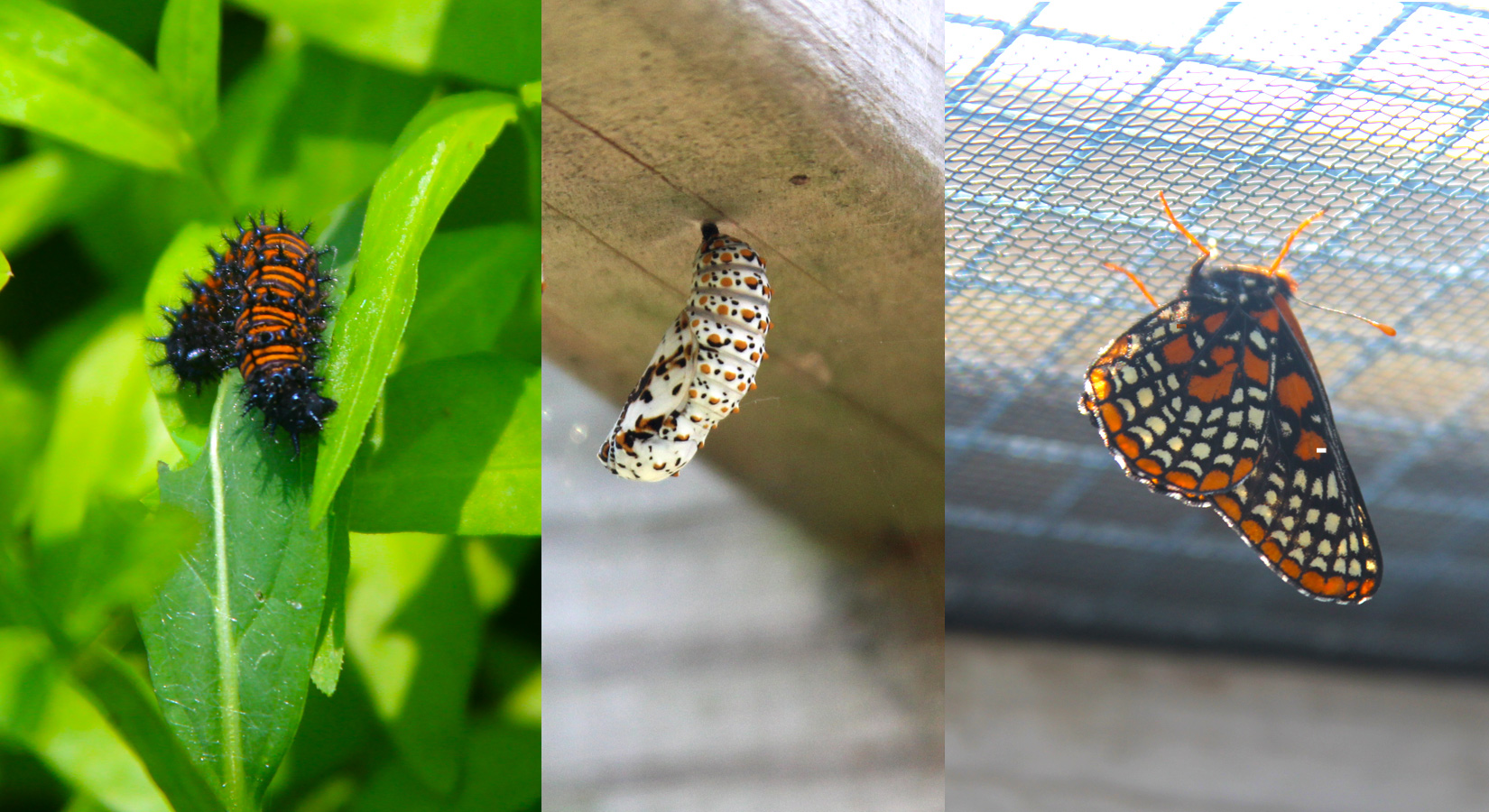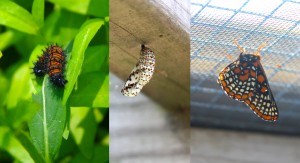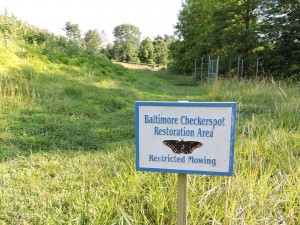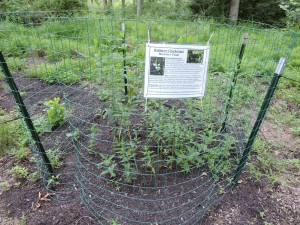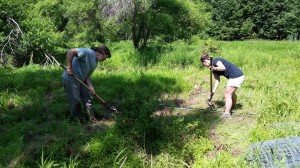The Baltimore Checkerspot Butterfly has been Maryland’s official state insect since 1973. It was named for George Calvert, the first Lord Baltimore, for having the same colors that were represented in his heraldic shield. This freshwater, wetland species was once common in Maryland, occupying multiple sites in over 15 counties; however, in recent decades it has experienced significant population declines. Today, it occupies only 11 sites within 7 counties. The Baltimore checkerspot is included on the Maryland Department of Natural Resources’ list of Rare, Threatened and Endangered Animals.
Although reasons for the Baltimore checkerspot’s decline are not completely understood, contributing factors include habitat loss and degradation, climate change, non-targeted exposure to insecticides, and overconsumption of its host plant, white turtlehead, by a large white-tailed deer population. Checkerspots depend on white turtlehead for facilitation of reproduction, nourishment, and protection from predation. Deer browsing on its host plant has undoubtedly played a large role in the decline. Checkerspot caterpillars feed almost exclusively on white turtlehead, especially in the summer when the caterpillars are small. As they become larger, they may use a variety of other host plants in addition to white turtlehead, including arrowwood viburnum, narrow-leaved plantain, penstemon, and honeysuckle. Adult checkerspots obtain nectar from flowering plants including common milkweed, dogbane, several species of mountain mint, and wild blackberry; but they depend on white turtlehead on which to lay their eggs.
In Harford County, the Checkerspot Corridor Team has taken action in conservation efforts of the Baltimore checkerspot. The team has been working to protect the Baltimore checkerspot through habitat conservation and enhancement, along with captive rearing and release programs. The team is comprised of Maryland DNR representatives, and local nature and education centers, including Harford Glen, Anita C. Leight Estuary Center, Eden Mill, and Susquehannock Wildlife Society. The team has collected data on the distribution of white turtlehead, enhanced habitat by installing enclosures for white turtlehead and to protect against deer browse, and is researching dispersal patterns of the Baltimore checkerspot. Recently, the team has collaborated with the Ma and Pa Heritage Trail with whom it planted and fenced white turtlehead at the Blake’s Venture section of the Ma and Pa Trail.
You can help protect the Baltimore checkerspot butterfly by reporting any sightings of the insect and, in the future, there may even be opportunities for citizens to plant white turtlehead to help establish this species across a wider area. If you want to get involved, please visit www.baltimorecheckerspot.org to learn more.

